A couple of weeks ago, MU in Eindhoven invited the public to a 2 day long immersion into all things bio art and bio design. The Body of Matter / BAD Award Special weekend lined up a series talk, panels, workshops and performances and explored how the techniques and challenges of life sciences are embraced by contemporary artists and designers. There’s more details in the first part of the report. Head this way if you haven’t read A weekend of bio art and bio design at MU in Eindhoven (part 1.)
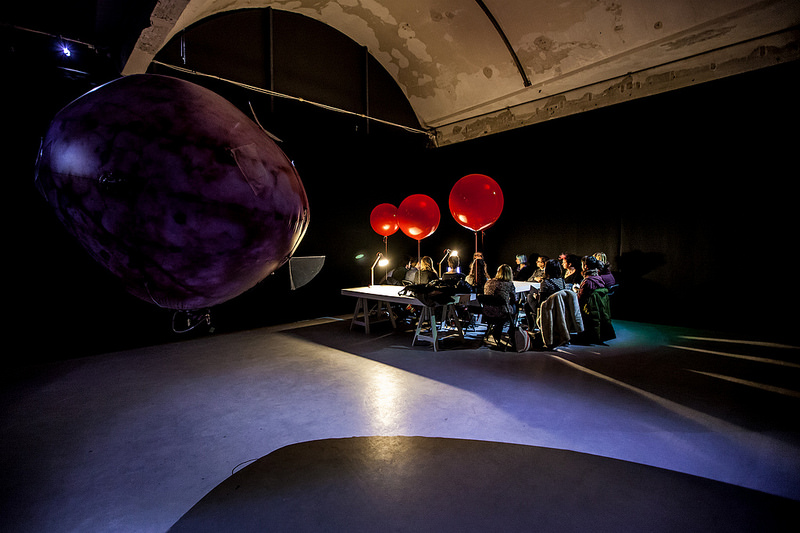
Masterclass: Artificial idiocy with Agi Haines. Body of Matter – MU Eindhoven, 2016. Photo by Hanneke Wetzer
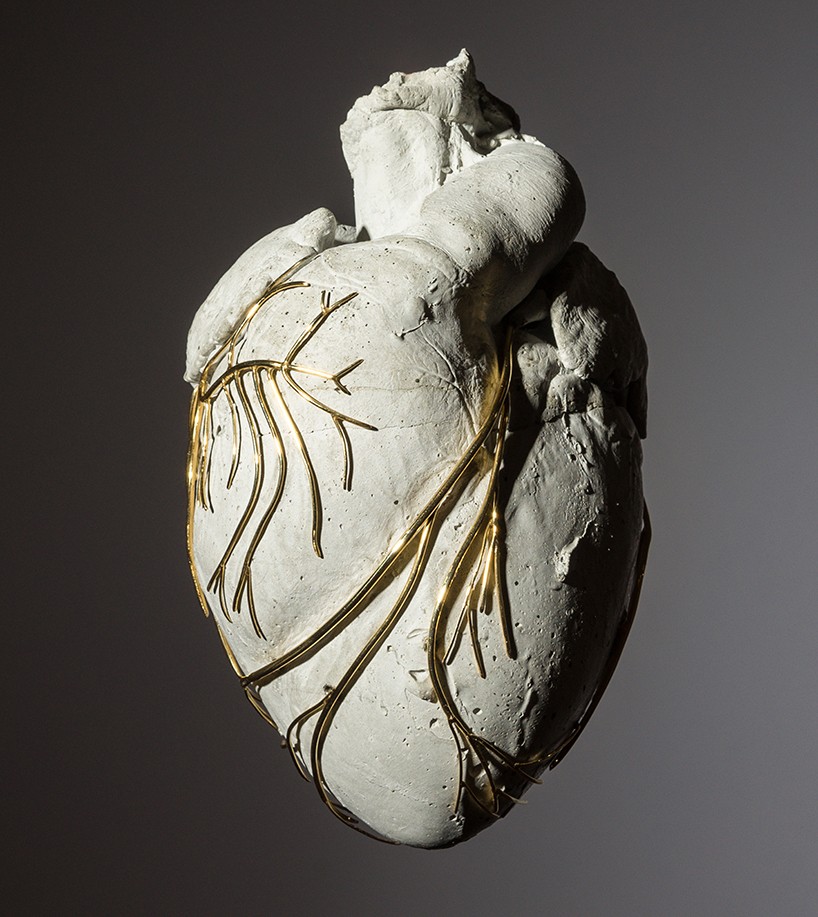
Isaac Monté, The Art of Deception (Heart of Stone)
But before i proceed with the final part of my report from the weekend, I need to say something about Eindhoven. Several years ago, i wrote about an exhibition in Eindhoven. I can’t remember what exhibition i was reviewing at the time but i do remember that i wrote that the city looked ‘as dull as dishwater.’ I’ve had a change of heart. Eindhoven always had the Design Academy, the fantastic Van Abbemuseum, the MU art center and various other interesting cultural spaces. But now they have Strijp S, a 27 hectare huge area attracting a dynamic crowd of artists, designers, concept stores, juice bars, a communal vegetable garden and organizations. Strijp S used to be the industrial site of the company Philips. It’s a mere 15 minute walk away from the city center and that’s where MU is now located. And Baltan Laboratories. And the BioArt Laboratories. And more. Each time i go to Strijp, there’s something new, thrilling and stylish to discover.
End of the parenthesis. Let’s get back to Body of Matter and to the artists’ talks, shall we?
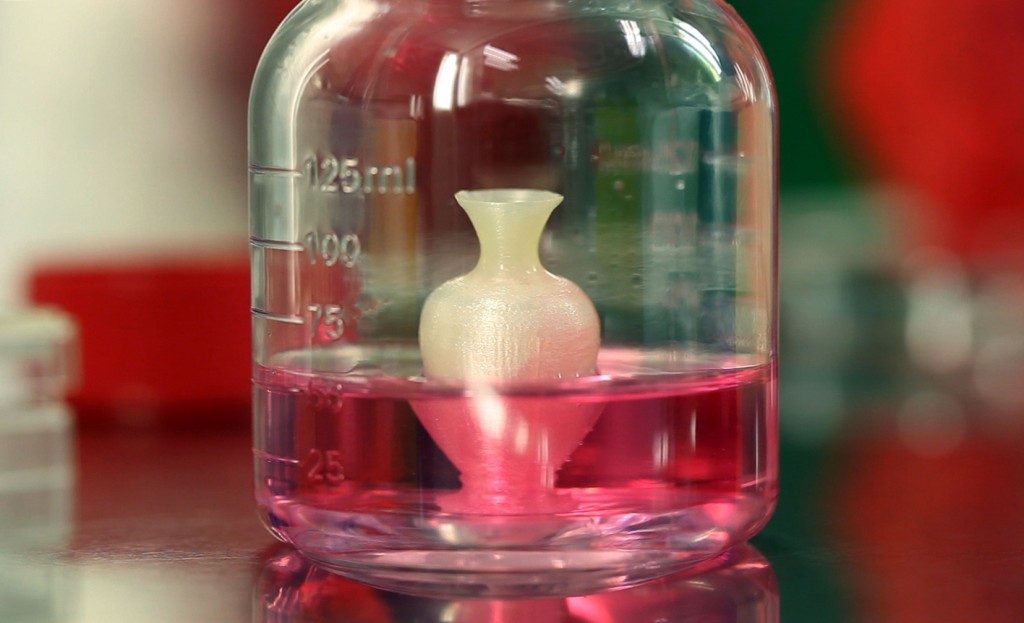
Hongjie Yang, Human Tissue Vase, 2015
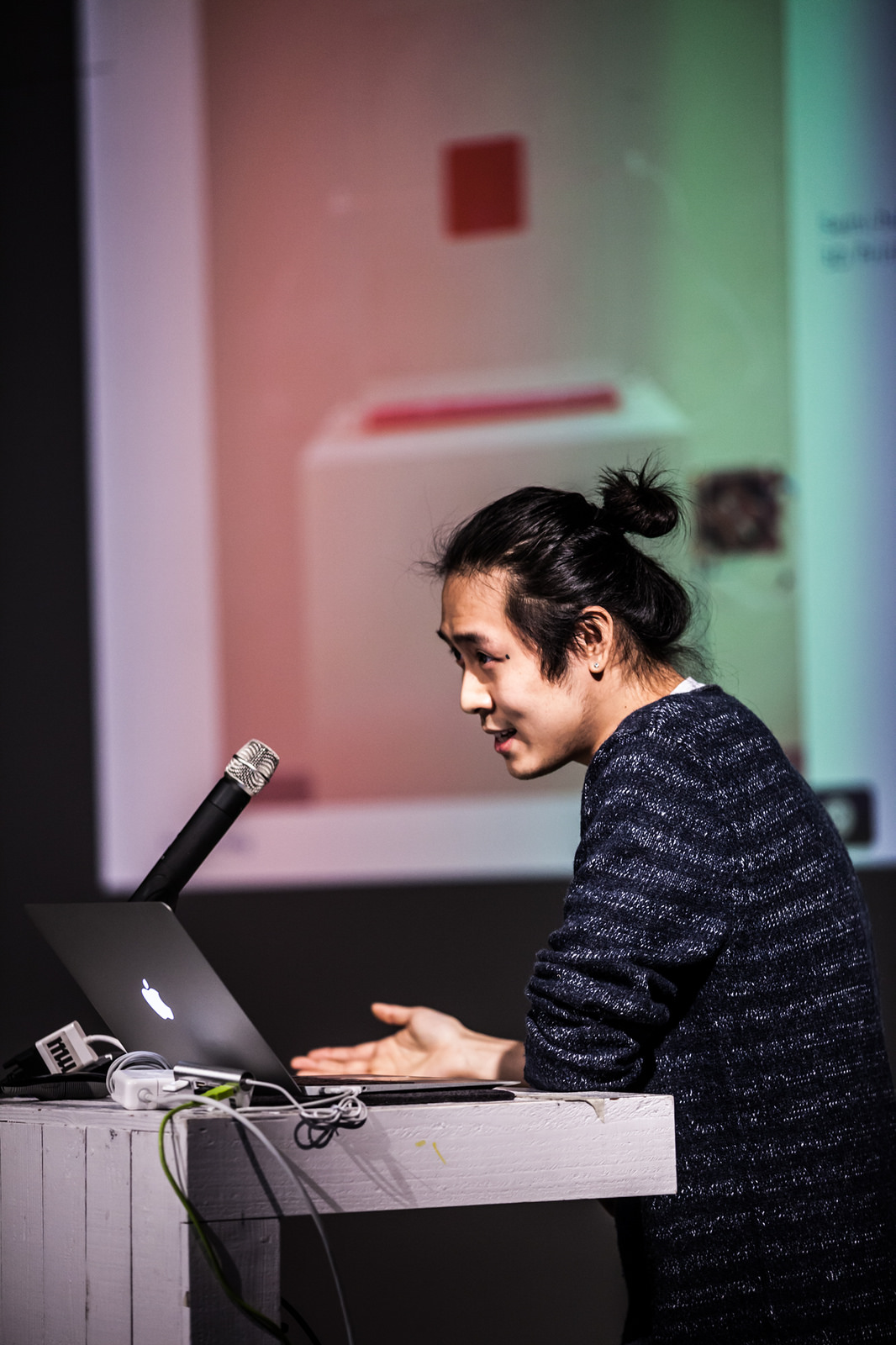
Lecture Hongjie Yang. Body of Matter – MU Eindhoven, 2016. Photo by Hanneke Wetzer
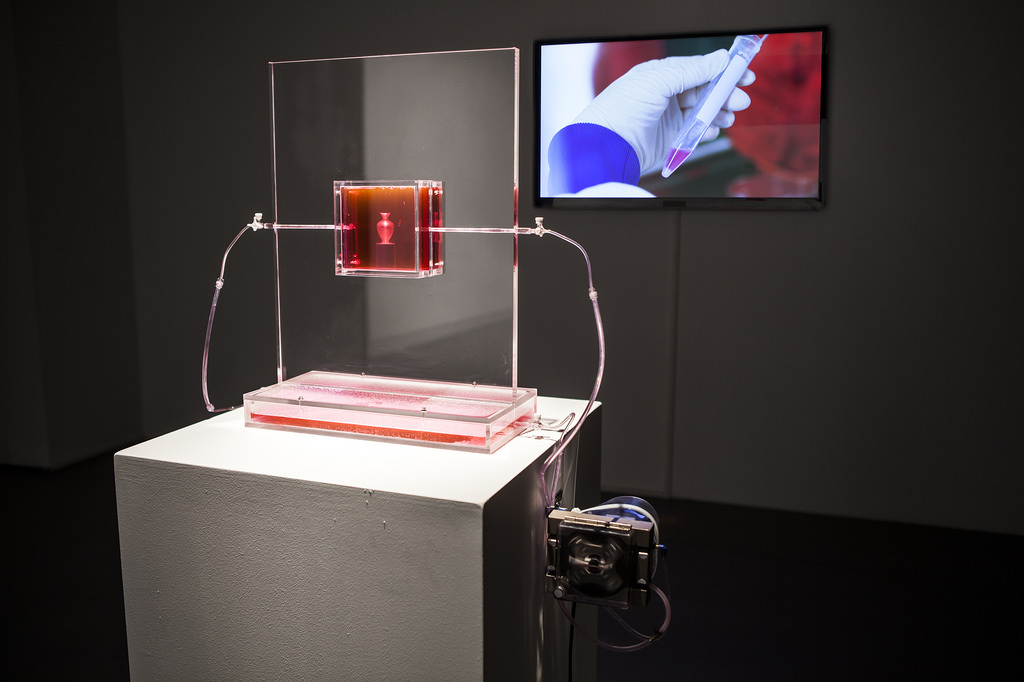
Hongjie Yang, Human Tissue Vase. Body of Matter – Body based bio art & design, MU Eindhoven, 2015. Photo by Hanneke Wetzer
Hongjie Yang‘s Human Tissue Vase is made of human kidney cells that have been grown on a 3D vase-shaped scaffold. I first dismissed his work, thinking that Tissue Culture and Art Project had been there before with their Victimless Leather jacket. But Yang’s piece has a different focus.
It’s less about the ethics and politics of using tissue culture and more about exploring the place that biotechnology can occupy in the history of design techniques and aesthetics. Furthermore, the designer was also intrigued by the kind of relationship we might develop with artifacts that share genetic information with us. Would we care more for an object made using our own cells? Will human-derived objects blur the distinction between person and object, between alive and inanimate?
The designer is particularly interested in examining the influence that human progress has on aesthetics. New technologies can be seen as disrupting any idea we might have about aesthetics and about the sublime. They create the conditions for new objects and aesthetics to develop. The chisel was disruptive, it enabled for a finer shaping of wood or stone. The Industrial Revolution in England was also aesthetically disruptive because it led to the invention of bone china. We could multiply the examples. But now that we are entering the Post Natural Age, what will the new chisel be? Will we see the emergence of lab-grown china? Will biotech innovations transfer into new aesthetics?
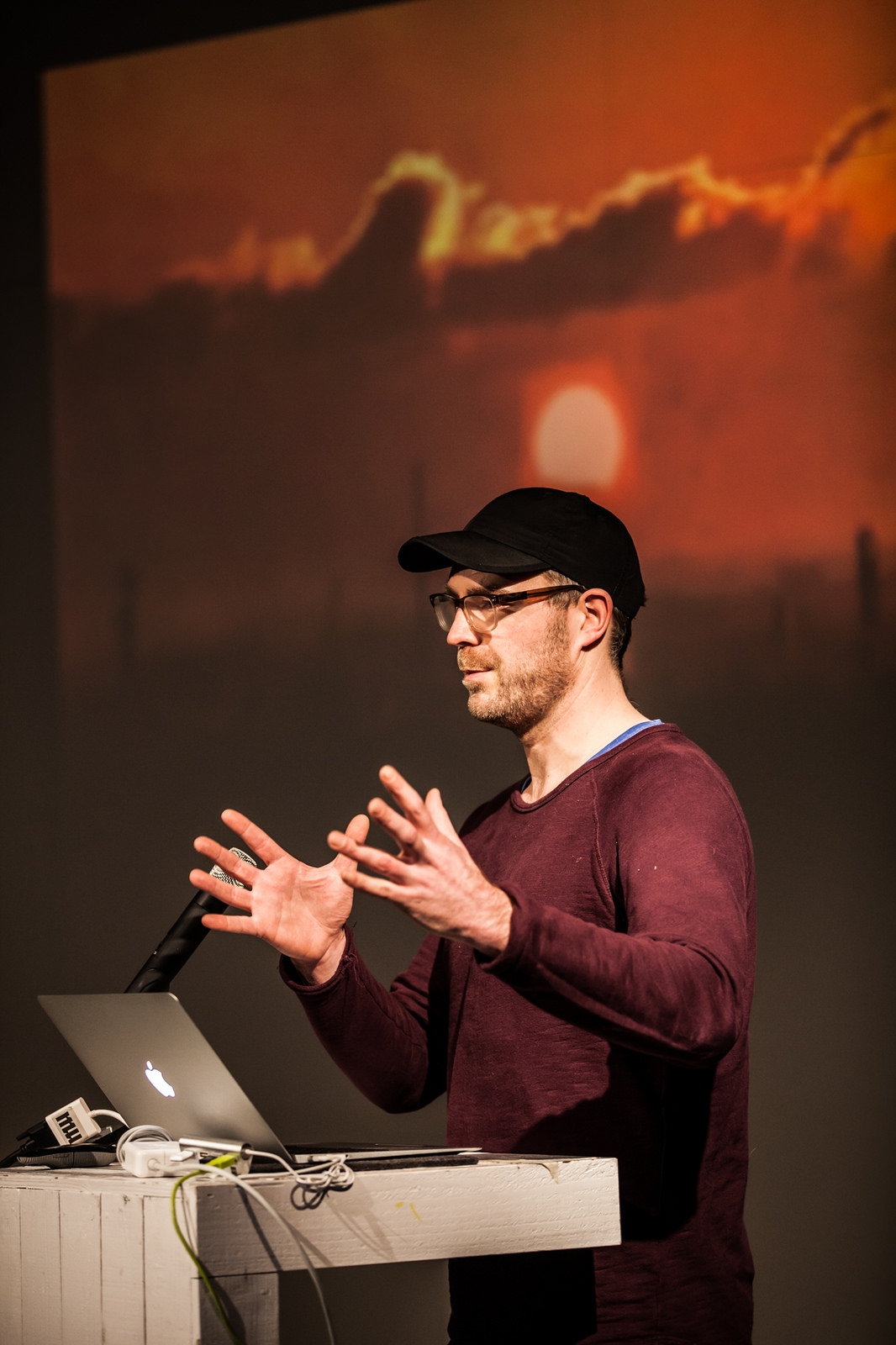
Lecture Floris Kaayk. Body of Matter – MU Eindhoven, 2016. Photo by Hanneke Wetzer
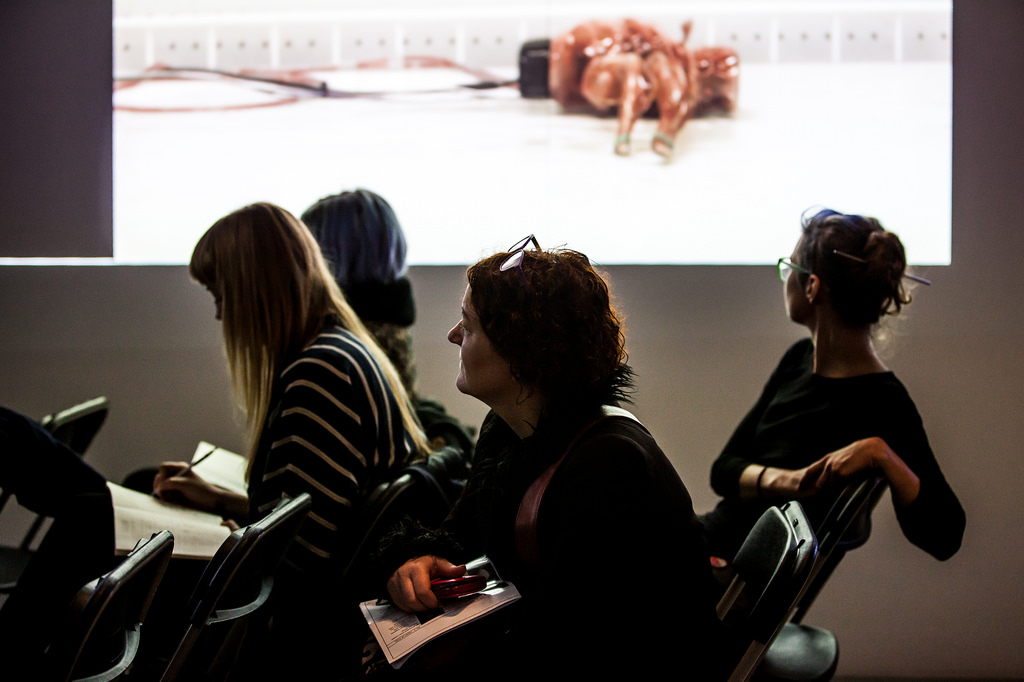
The public during the Body of Matter special weekend, with Floris Kaayk‘s The Modular Body video in the background. Photo by Hanneke Wetzer
Floris Kaayk! I had almost forgotten how impressive his work is. I remember seeing Metalosis Maligna for the first time, it was clearly a mockumentary but i was still tempted to believe that the story it narrated was true. Shot in the style of a documentary, the video informed the public about a disease that affects patients with medical implants. Metal implants get infected and start growing inside the body until they sprout out of it, start eating the flesh away and turn human patients into half-organic, half-mechanical beings.
Kaayk creates fictional films, interactive projects and online fictions. He takes a well-known media format and subverts it by replacing existing events with fictional stories. In 2012 his online media project Human Birdwings was all over the press. Told through a series of short youtube videos, the work chronicled the successful adventure of a man building a set of wings that allowed him to fly. Most major news outlet fell for it. Until Kaayk revealed that the inventor and the story were purely fictitious.
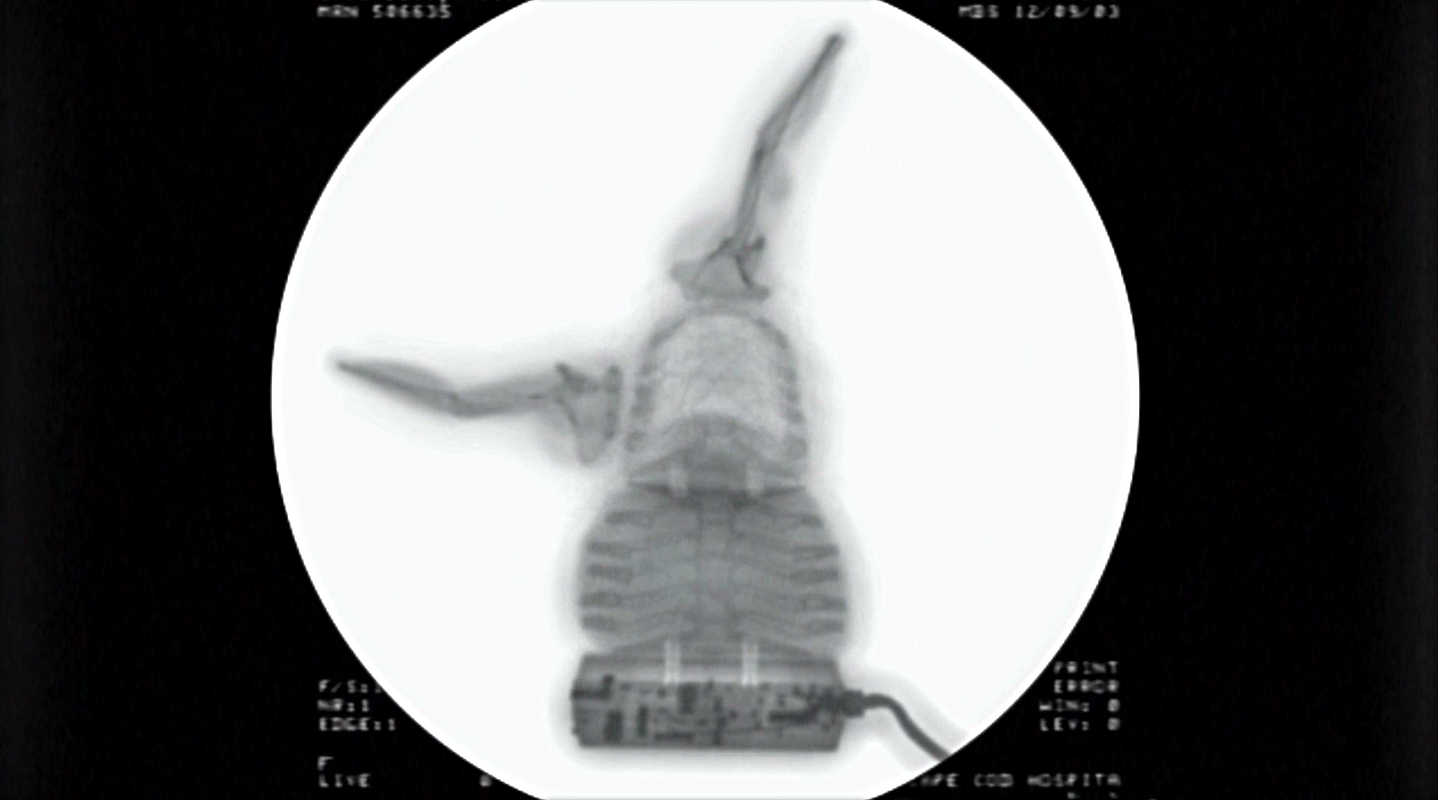
Floris Kaayk, The Modular Body, 2014
Floris Kaayk, The Modular Body, 2014
Kaayk is now working on a new internet story called The Modular Body. The work is inspired by 3D-printed organs and the media format adopted is the one of kickstarter pitch videos. The artist was interested in the gap between what the science can actually do and the way the media presents it. If you read the press, you get the felling that human kidneys, hearts and noses are routinely printed and implanted. But the implementation of 3D printed technology in medicine is still years away from now. The Modular Body fictionalizes this 3D printed body and presents it as the solution to our outdated bodies. Kaayk envisions that in the future we’d have 3D printed body parts that work like detachable modules. We’d be able to combine, plug and connect them to each other according to our needs. We could replace any part that doesn’t function optimally and adapt it to whichever situation we might face. The Modular Body is still a work in progress and it will take the form of a series of footage fragment. The Body of Matter exhibition showed extracts of the final work. It’s pretty gruesome. There are raw bits of flesh crawling over a table.
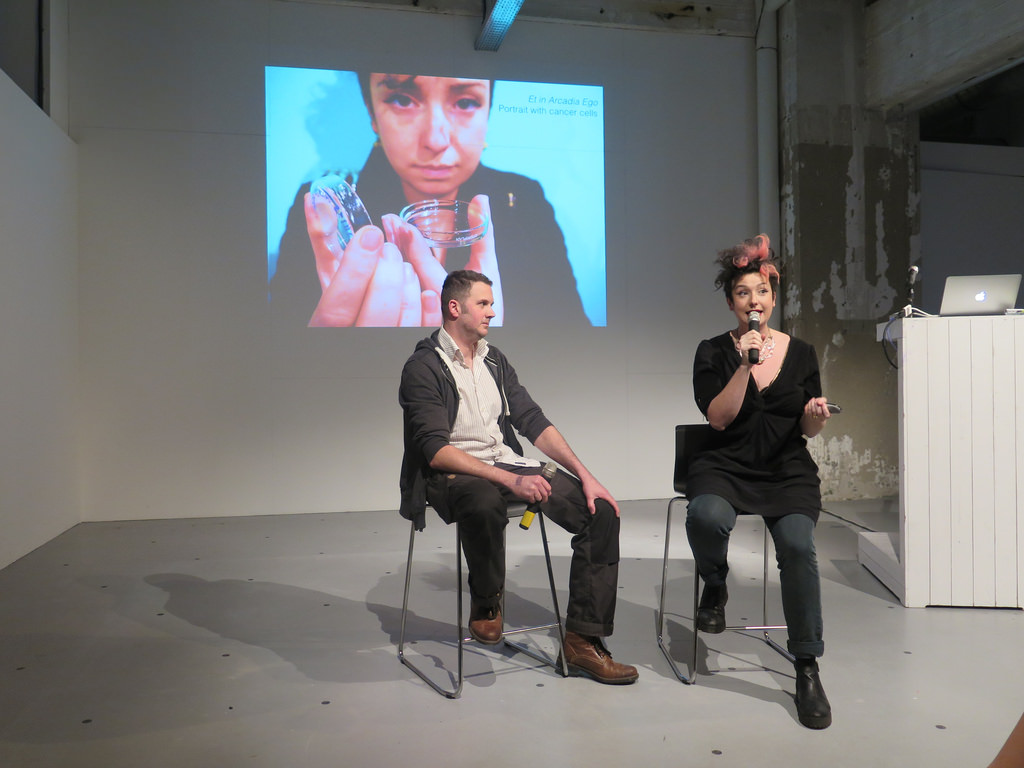
Conversation between Charlotte Jarvis and Dr. Reinout Raijmakers from Science for Life
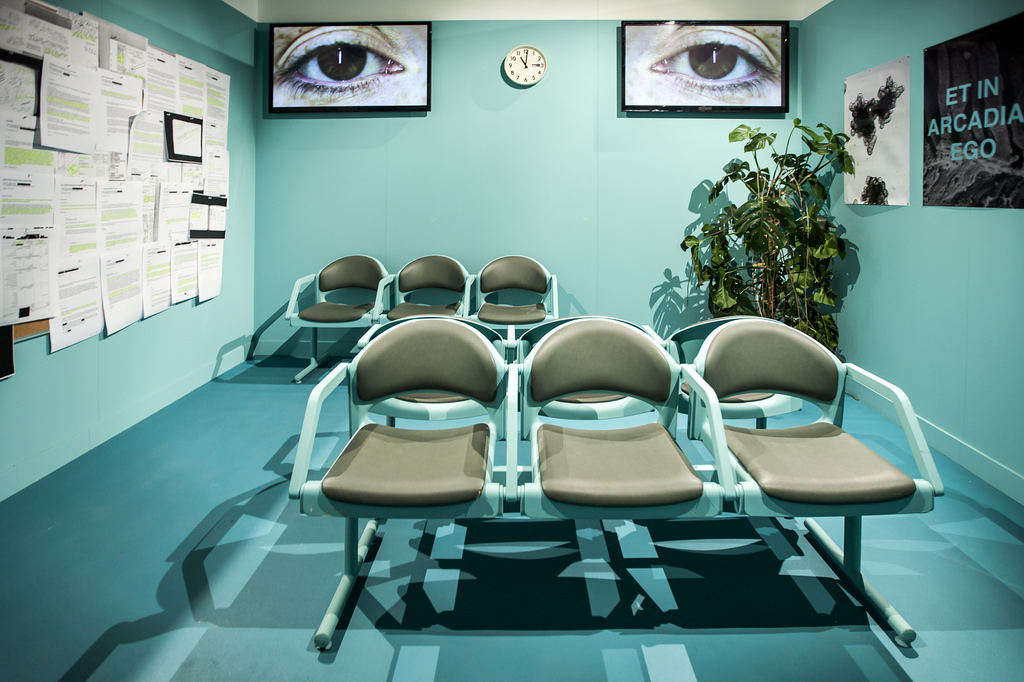
Charlotte Jarvis, Et In Arcadia Ego. Body of Matter – Body based bio art & design, MU Eindhoven, 2015. Photo by Hanneke Wetzer
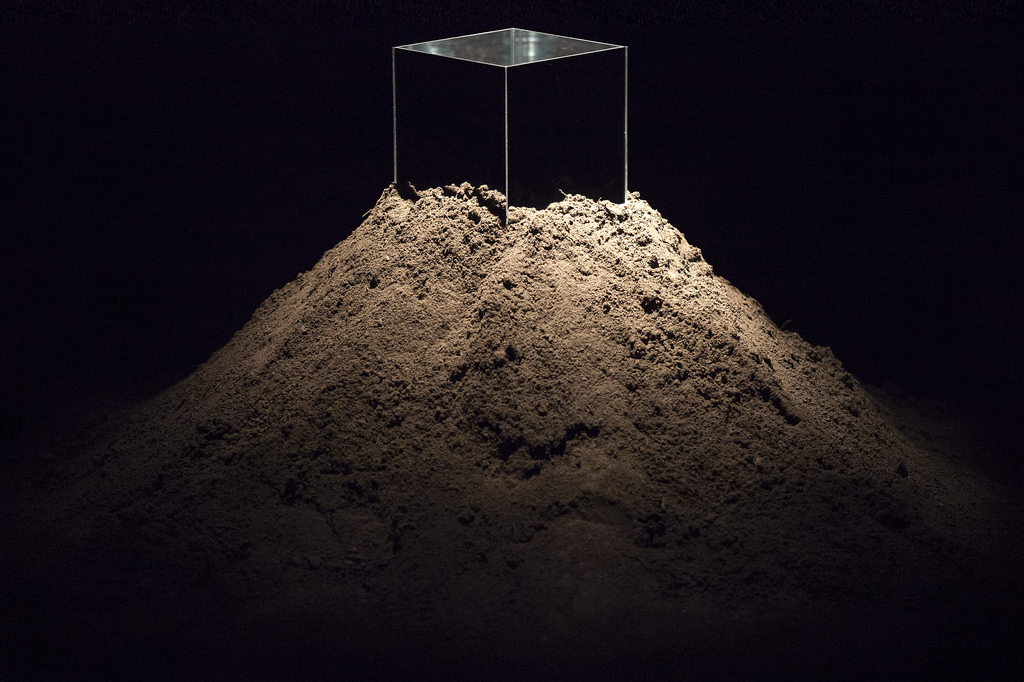
Charlotte Jarvis, Et In Arcadia Ego. Body of Matter – Body based bio art & design, MU Eindhoven, 2015. Photo by Hanneke Wetzer
Charlotte Jarvis invited Dr. Reinout Raijmakers to join her in a conversation about art & science because he is the scientist she turns to whenever she has an idea for a new project but doesn’t know whether it is feasible, which field of science might help her give a tangible form to her projects, etc.
She briefly explained one of her latest works, Et In Arcadia Ego. Part of the MU exhibition, the piece was Jarvis’ attempt to confront her own mortality head on. She worked with Prof. Hans Clevers and Dr Jarno Drost at the Hubrecht Institute to grow gut cancer tumour from her own cells. The project started with a rectoscopy to collect colon tissue. The samples were then grown in vitro and then submitted to mutations that made them cancerous.
Jarvis also talked about Music of the Sphere, a collaboration with Dr. Nick Goldman, the molecular biologist who stored Shakespeare’s Sonnets and other data into synthetic DNA. The artist used Goldman’s technology to encode a new musical recording by the Kreutzer Quartet into DNA. The DNA has been suspended in soap solution and broadcast on the audience with soap bubbles. The ‘recording’ fills the air, pops on visitors skin and literally bathes the audience in music.
The moment i almost dropped my pen and paper was when she talked about her desire to work with scientists on a new project that would consist in encapsulating and recreating the smell of her husband. She could make a fortune if she managed to patent the process! I wouldn’t mind packing a little flask of my boyfriend’s smell whenever i have to travel. Jarvis’ idea actually sparked some animated discussions in the public about perfumes, hormones, pheromones, sexual attraction, Putin body odour and all kinds of notions more or less related to the smell of people we love or loathe.
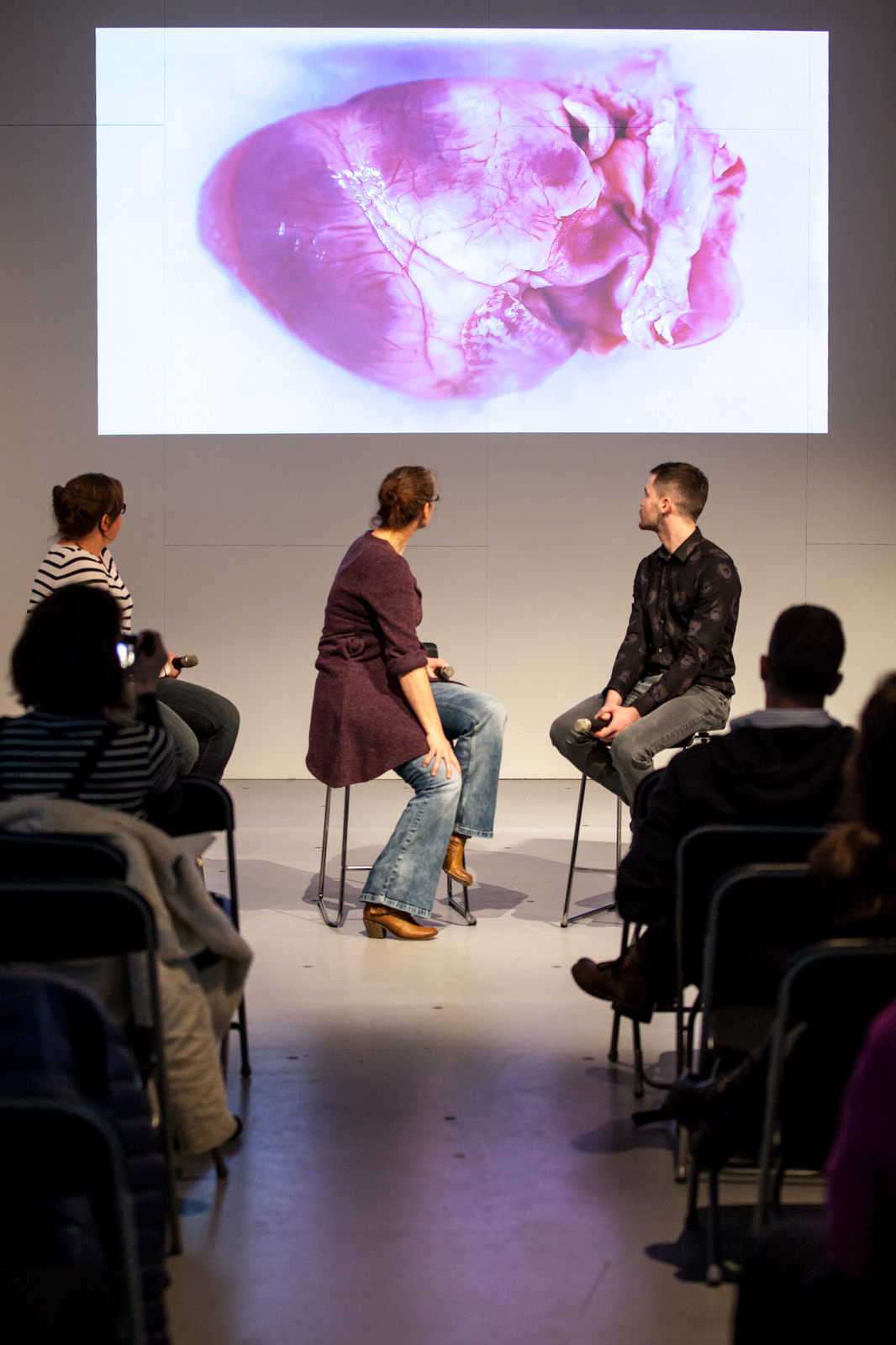
Launch of publication The Art of Deception and science panel by Isaac Monté. Body of Matter – MU Eindhoven, 2016. Photo by Hanneke Wetzer
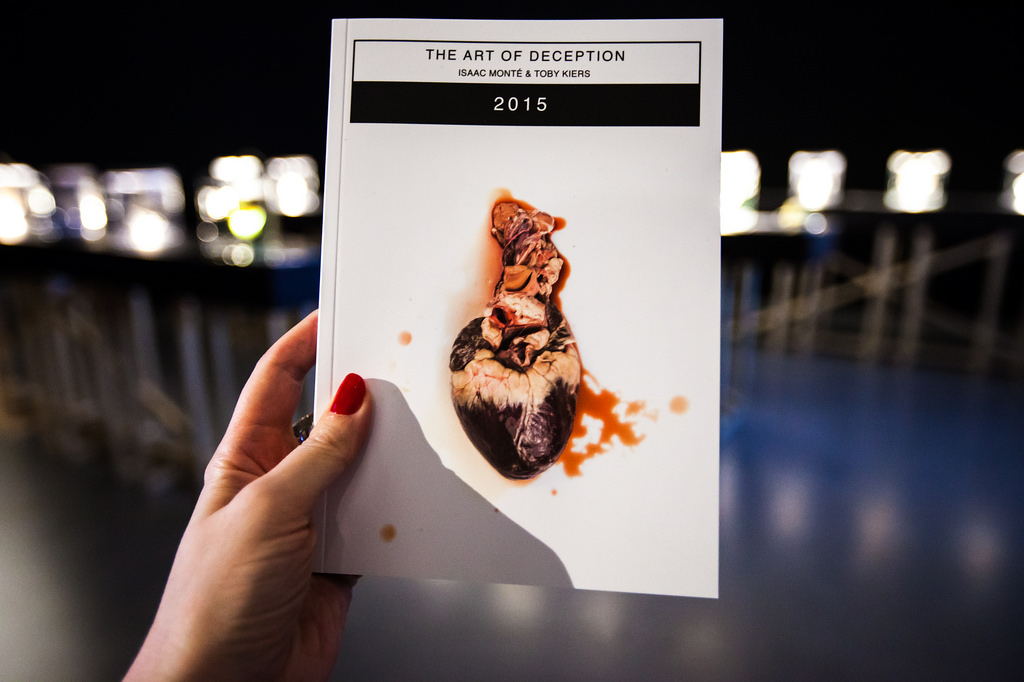
Launch of publication The Art of Deception and science panel by Isaac Monté. Body of Matter – MU Eindhoven, 2016. Photo by Hanneke Wetzer
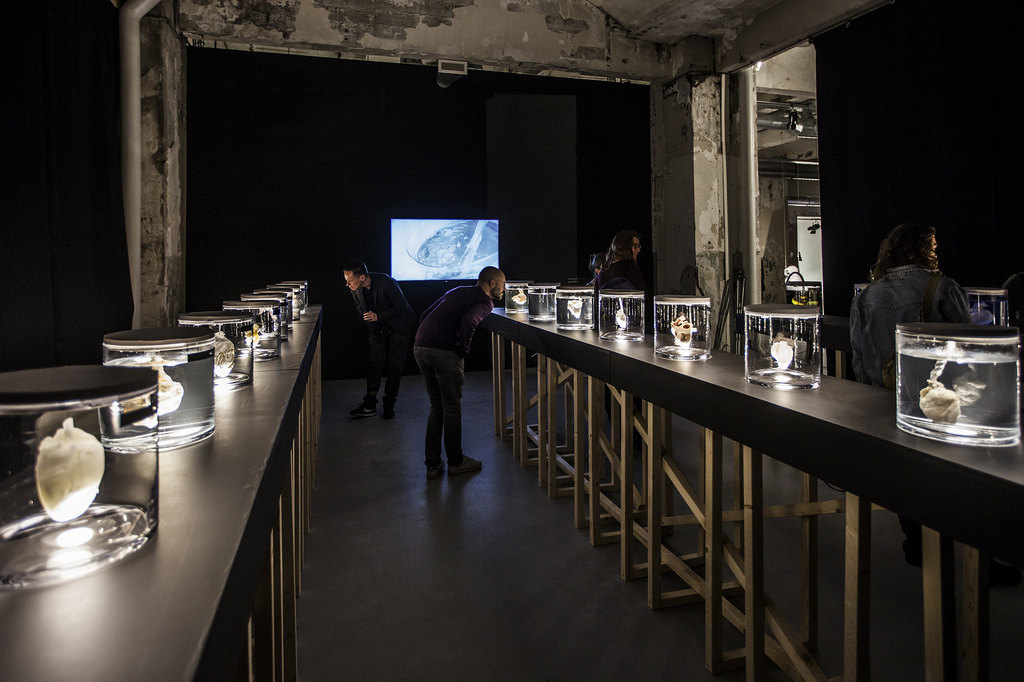
Isaac Monté, The Art of Deception. Body of Matter – Body based bio art & design, MU Eindhoven, 2015. Photo by Hanneke Wetzer
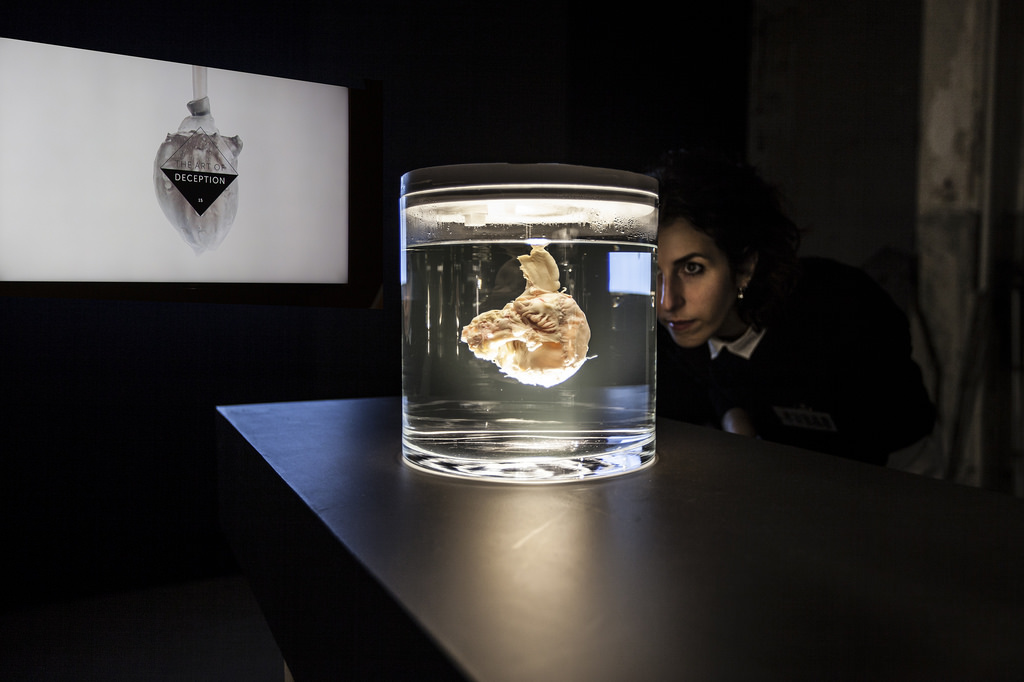
Isaac Monté, The Art of Deception. Body of Matter – Body based bio art & design, MU Eindhoven, 2015. Photo by Hanneke Wetzer
Isaac Monté talked to me about his project a few months ago (see Can organs be objects of design?) but the show allowed me to finally get to see the final 21 decellularized and modified pig hearts. They are incredibly beautiful and moving. The hearts and their story deserve to tour widely in exhibitions across the world.
The designer worked with Professor Toby Kiers (Free University Amsterdam) to decellularize pig hearts and manipulate each of them as if they were blank canvases that could be tattooed, embroidered, stained, dressed up with precious materials, filled with with concrete, etc. The decellularization process involves stripping organs of their cellular contents, leaving behind a scaffold that can be repopulated with stemcells. Isaac had invited 2 scientists to join him and discuss how far scientists but also artists or designers can go when it comes to manipulating organs. One of the scientists explained how they use decellularization technique in order to respond to the lack of organ donations. Her work consists in exploring how we can turn an unhealthy liver into a liver that can safely be transplanted. They would get rid of the cells in the liver and then fill the empty matrix with good cells.
The designer documented the whole research and creation process in The Art of Deception book.
That’s it for my report from the Body of Matter weekend. May the event inspire other places around Europe to set up new initiatives, commissions and competitions that will help artists and designers dialogue with scientists.
Previously: Plastic trash, rotting rubber & wonky skeleton. Maarten Vanden Eynde’s lecture at the Body of Matter / BAD Award weekend, A weekend of bio art and bio design at MU in Eindhoven (part 1), Matter of Life. Growing new Bio Art & Design
